16 Easy Methods To Stop your MacBook from Overheating
A MacBook may overheat due to its internal OS issues or problems caused by installed applications. Internal macOS issues might range from outdated OS to corrupt SMC, NVRAM, and PRAM. Overheating of MacBooks is a widely reported issue and many different models are affected. The issue occurs when a MacBook starts to overheat to the point where it cannot be touched and in some worst cases, the affected MacBooks showed burn marks.
There are instances where some units started to overheat after an OS update/upgrade. There are also reported cases when the issue only occurred when a particular app was in use.
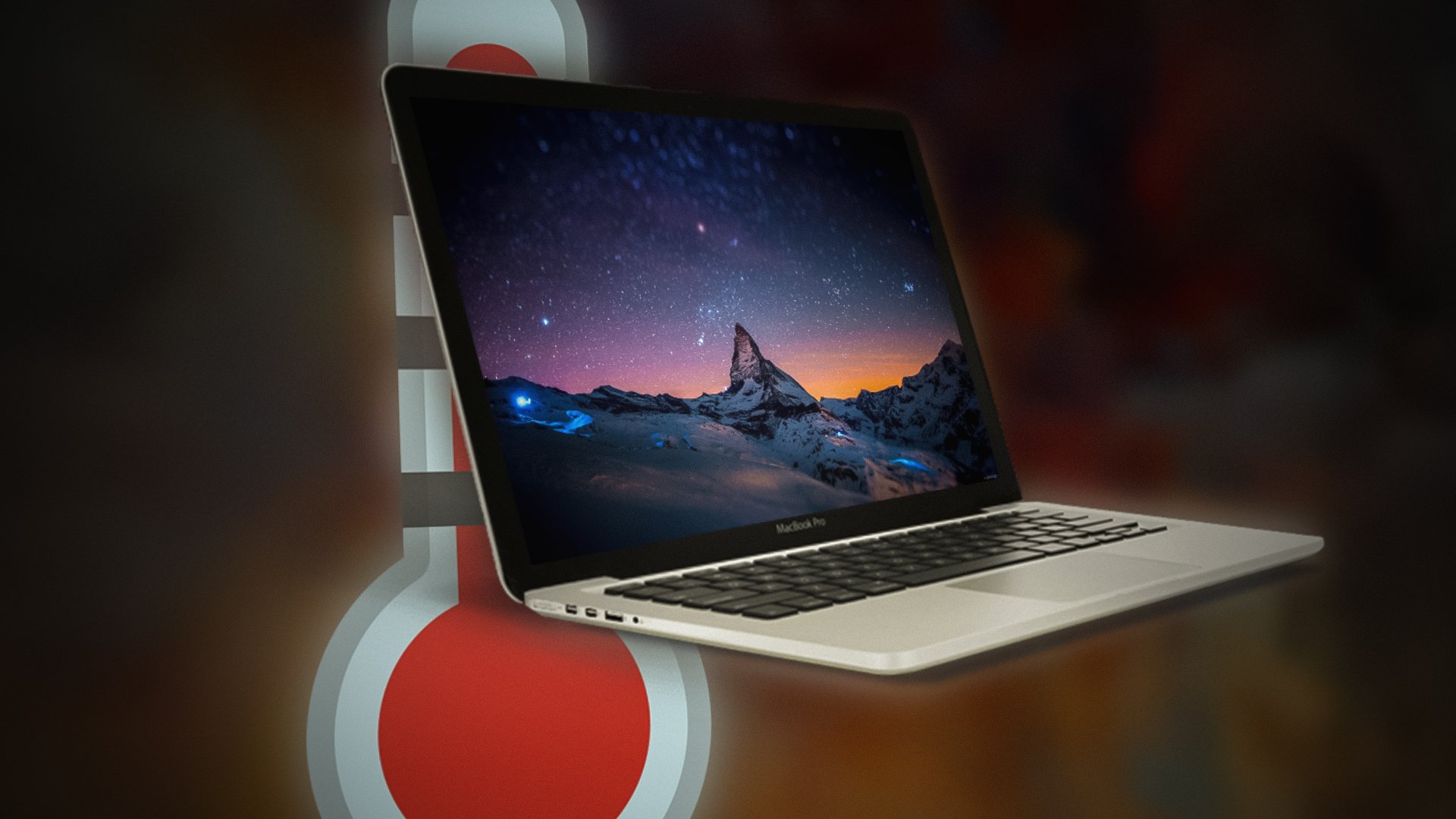
Your MacBook may become hot due to many factors but the undermentioned can be easily categorized as the most common ones:
- Outdated OS of the MacBook: If the OS of the MacBook is outdated, then its incompatibility with the other OS components like a 3rd party application (e.g., Chrome) may cause the issue as the OS fails to properly handle the app and release the system resources (like RAM) properly, making it resource hogging.
- Corrupt SMC and NVRAM/PRAM of the MacBook: If any of the SMC and NVRAM/PRAM of the MacBook is corrupt, then their inability to properly handle the requested operations by the MacBook may overheat the system.
- Graphics Switching of the MacBook: A dual-card MacBook might start to overheat if, due to a glitch, it is constantly switching between the cards which may overburden the device and thus cause the issue.
- Outdated or Conflicting Applications on the MacBook: If an application on the MacBook is outdated or is in conflict with the macOS, then that may lead to the overheating issue at hand as the app may not behave normally and keep the system resources under a constant overload.
1. Quit the Problematic Processes and Force Restart the MacBook
A temporary OS glitch might overheat a MacBook and force restarting the MacBook may clear the glitch, thus solving the problem. Before proceeding, make sure the MacBook is in a well-ventilated atmosphere and the room temperature is not hot.
- Click on the Apple icon on the Apple Menu and select Restart.
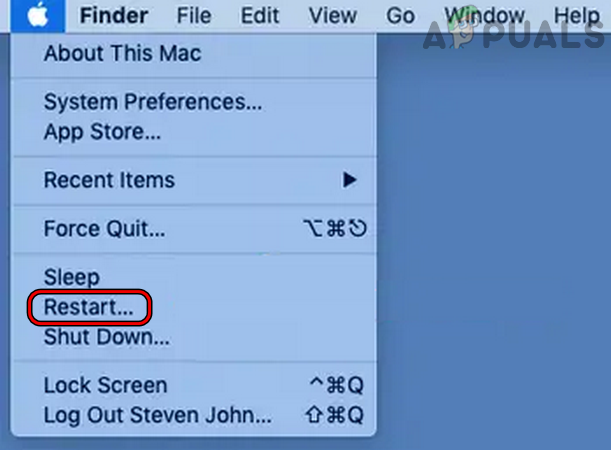
Restart MacBook - Upon restart, check if the MacBook is operating fine.
- If not, open Finder on the MacBook and head to Applications.
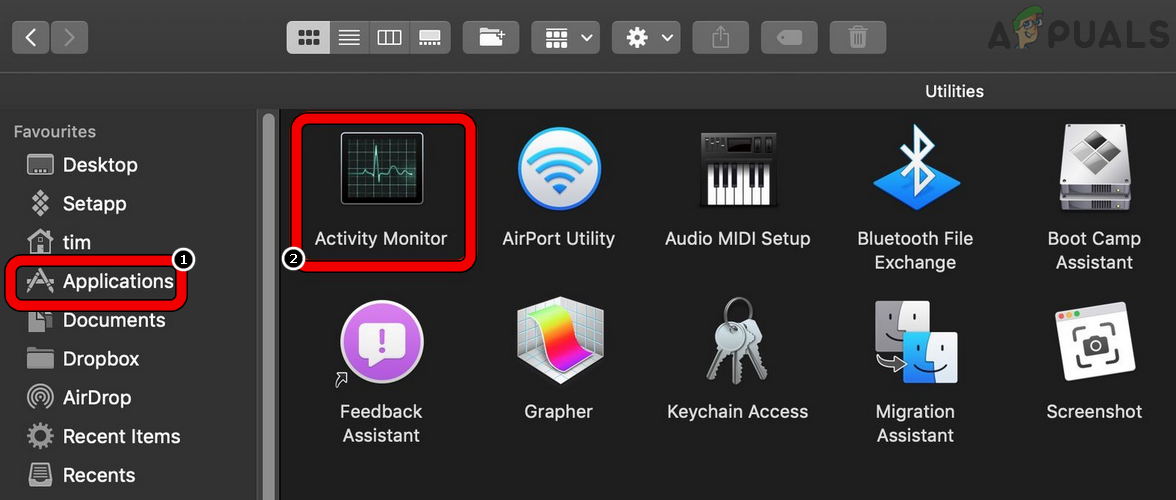
Open Activity Monitor in Applications - Now open Utilities and double-click on Activity Monitor.
- Afterward, set its View to All Processes.
- Then steer to the CPU tab and click on %CPU.
- Now double-click on the first process (like Chrome Helper) and click on Quit.
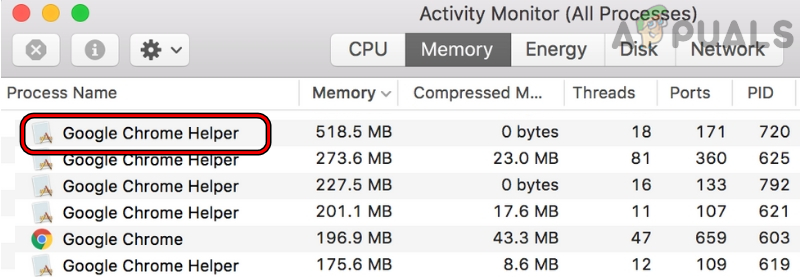
Open Google Chrome Helper in the Mac’s Activity Monitor - Then confirm to Quit the first process and repeat the same to quit all the CPU intensive processes.
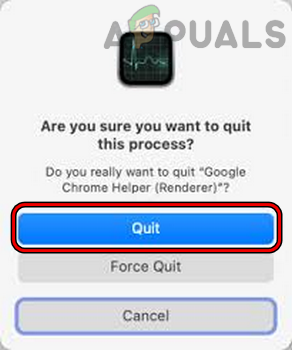
Quit Google Chrome Helper in the Mac’s Activity Monitor - Now sort the Activity Monitor by Memory usage and then quit all the memory intensive processes as well.
- Then press the Touch ID (power) key to force shut down the computer and once the MacBook has powered off.
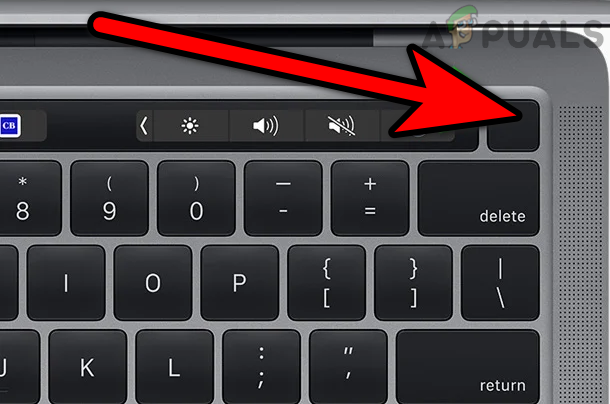
Force Restart the MacBook - Wait till it cools down and then power it on to check if it is clear of the heating problem. If the issue persists, make sure to note down the applications/processes showing the high system usage in the Activity Monitor as you may need to troubleshoot those applications/processes later on.
- If the issue did not resolve after the previous steps, keep the MacBook powered on for a few hours without doing anything (so that it can re-index after an OS upgrade) and then check if it is working fine.
2. Update/Upgrade the MacBook’s OS to the Latest Build
A MacBook may start overheating if its OS is outdated as it can make the MacBook incompatible with other system modules like a 3rd party app (e.g., Chrome) and the constant load by that app may cause the overheating. In this case, updating the OS of the MacBook to the latest build may solve the problem.
- Firstly, make sure to create a backup of the essential data of the MacBook and charge the MacBook’s battery fully.
- Now open the MacBook’s System Preferences and select Software Update.
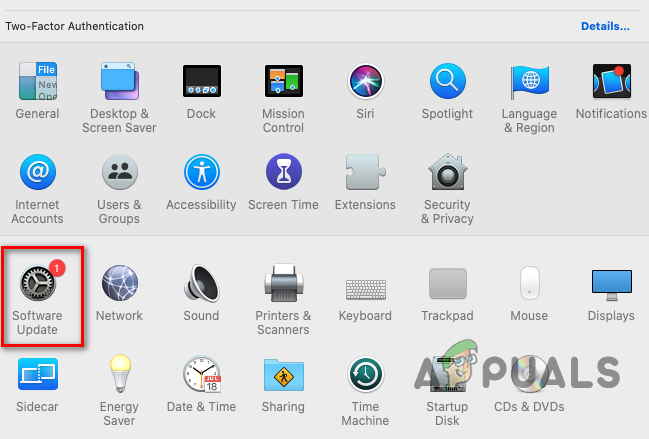
Open Software Update in the Mac’s Preferences - If a macOS update is available, click on Update Now or Upgrade Now.
- Then wait till the update is installed and afterward, restart the MacBook.
- Upon restart, check if its overheating problem is cleared.
- If not and the issue is occurring when charging the unit, check if the error is cleared out if the right-hand port of the MacBook is used to charge it.
3. Perform an SMC Reset on the MacBook
SMC (System Management Controller) holds the configuration of the system’s power, fans, battery, and other similar features. If the SMC of the MacBook is corrupt, then that may cause overheating of the MacBook as the device fails to properly handle the power requirements of the MacBook and its apps. In this context, performing an SMC reset on the MacBook may clear the heating issue.
- Shut down the MacBook and press/hold the following keys (the MacBook might power on):
Control + Option + Shift
- Now wait for 7 seconds and then, while keeping a hold on the three keys, press/hold the power button of the MacBook. If the MacBook was powered on, it may power off.
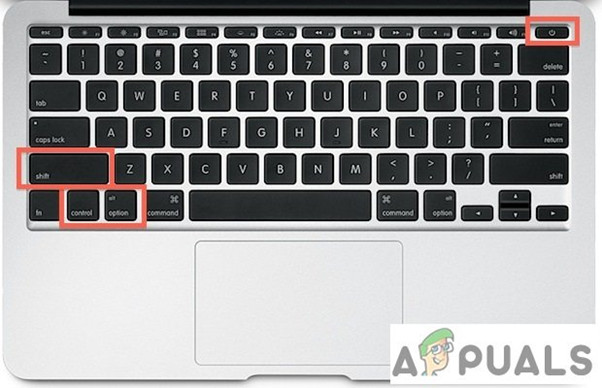
Reset the SMC of Mac to Defaults - Then wait for 7 seconds and release all the 4 keys.
- Now wait for a few more seconds and then power on the MacBook to check if its heating issue is resolved.
- If not, check if enabling Low Power Mode on the MacBook cools the system down.
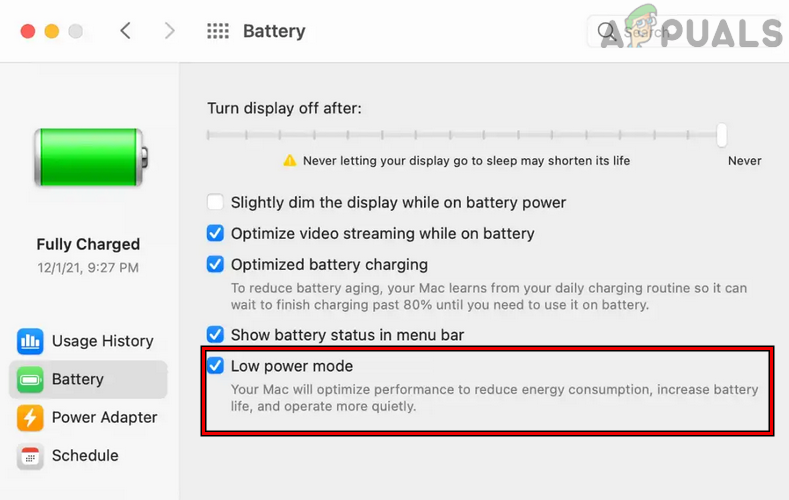
Use Low Power Mode of the MacBook
4. Perform an NVRAM and PRAM Reset on the MacBook
Nonvolatile Random-Access Memory (NVRAM) and Parameter RAM (PRAM) hold different essential configurations like display resolution, sound volume, startup-disk select, kernel information, etc. If any of these configurations are corrupt, then that may cause overheating of the MacBook. In this scenario, performing a reset of the NVRAM and PRAM may solve the problem.
- Power off the MacBook and press/hold the following four keys:
Option, Command, P, R
- Now, wait for 20 seconds and then release the above-mentioned keys. On the MacBook that plays a sound on the startup, you may release the above keys when you hear the startup sound for the second time. In the case of a T2-based MacBook, you may release the above-mentioned keys when the Apple logo is shown for the second time.

Reset PRAM NVRAM of the MacBook - Once the MacBook is properly powered on, check if its heating issue is resolved.
5. Disable Ken Burns Screen Saver on the MacBook
A MacBook might overheat if Ken Burns screen saver is being used on the PC as, due to a glitch, this screen saver effect might use excessive system resources and cause the issue. In this case, disabling the Ken Burns screen saver on the MacBook may solve the problem.
- Launch the System Preferences of the MacBook and open Desktop & Screen Saver.
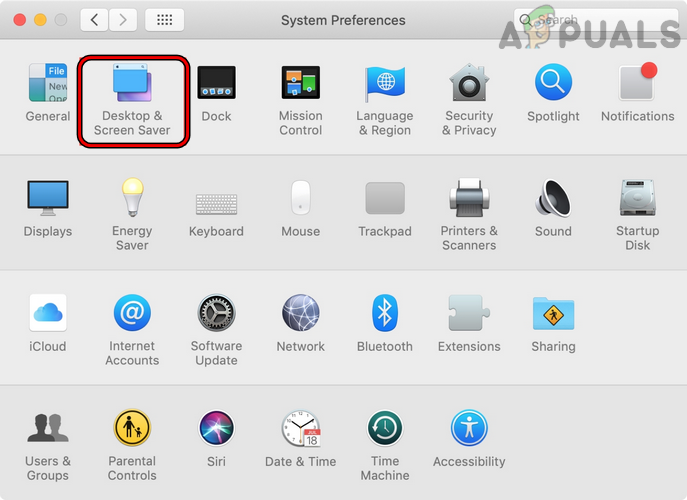
Open Desktop & Screen Saver in the MacBook’s Preferences - Now select Screen Saver and switch to another screen saver like Word of the Day.
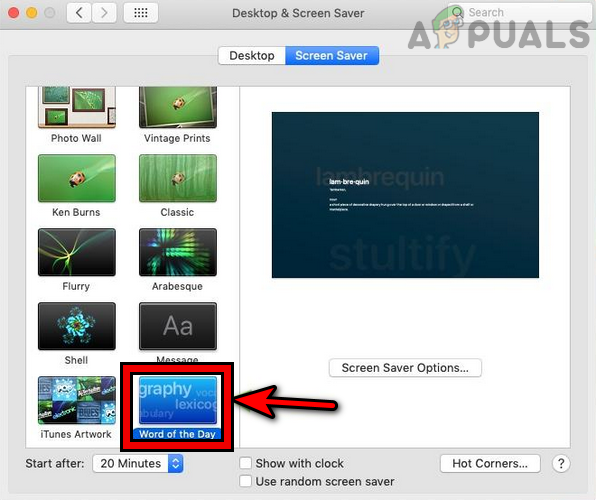
Change the MacBook Screen Saver to Word of the Day - Then check if the MacBook’s heating issue is cleared.
6. Re-log into iCloud
If the iCloud-related modules are failing to execute properly and the continuous try by these modules to execute properly may overload the MacBook and thus overheat it. Here, re-logging into the iCloud may clear the heating error.
- Launch the MacBook’s System Preferences and click on your Apple ID.
- Now head to the iCloud tab and click on Sign Out.
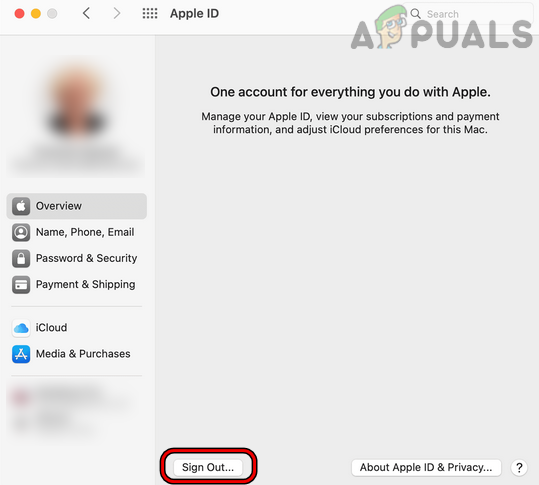
Sign Out of the iCloud on the MacBook - Then confirm to Sign Out of the iCloud and follow the prompts on the screen to complete the process.
- Now restart the MacBook and upon restart, log into the iCloud and then check if the MacBook is clear of the heating problem.
7. Update the Problematic Application to the Latest Build
If an application on the MacBook is outdated, then its incompatibly with the macOS may overheat the MacBook as the problematic app may fail to release a system resources and the persistent heavy use of that system resource may overheat the MacBook. You can find the problematic application through the Activity Monitor of the MacBook.
In this scenario, updating the problematic app to the latest build may solve the problem. For elucidation, we will discuss the process of updating the Chrome browser to the latest build.
- Launch the Chrome browser and click on its menu button (three vertical ellipses in the top right).
- Now hover over Help and in the sub-menu, select About Google Chrome.
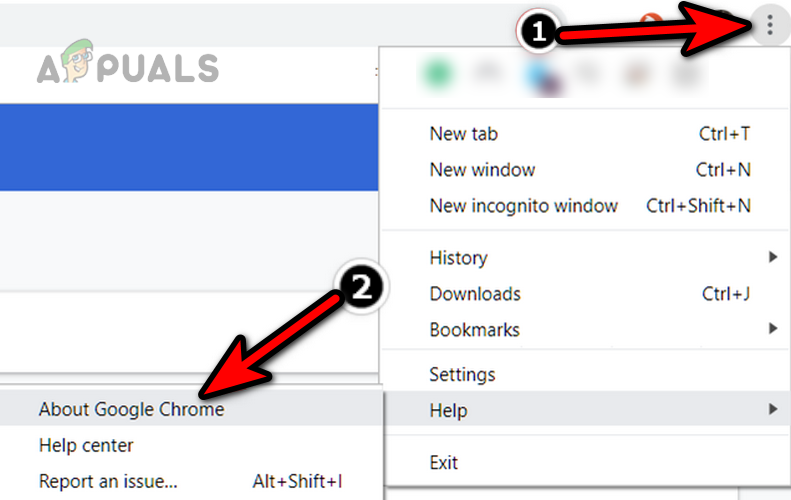
Open About Google Chrome - Then, in the resulting window, make sure the Chrome browser is updated to the latest build and when asked to, click on Restart Chrome.
- Upon restart, check if the MacBook’s overheating issue is resolved.
8. Disable Hardware Acceleration of the Browser
Hardware acceleration, when enabled, offloads particular computing tasks (like rendering of videos) from the general-purpose CPU and uses specialized hardware components of the system like a GPU to enhance the system’s performance.
If the MacBook’s Activity Monitor shows a browser (like Chrome) is excessively using the system, then the glitched-out hardware acceleration feature of the browser might be causing the issue. Here, disabling the hardware acceleration of the browser may solve the heating problem. For illustration, we will discuss the process of disabling hardware acceleration on the Chrome browser.
- Launch the Chrome browser and click on the menu icon (three vertical ellipses in the top right).
- Now select Settings and in the left pane, expand Advanced.
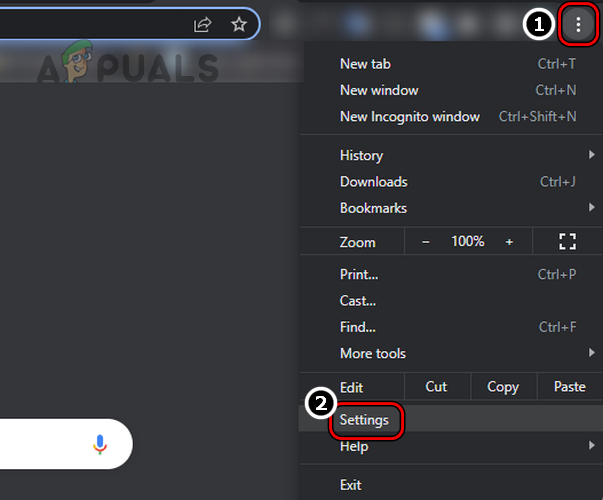
Open the Chrome Browser Settings - Then head to the System tab and in the right pane, disable Use Hardware Acceleration When Available by toggling its switch to the off position.
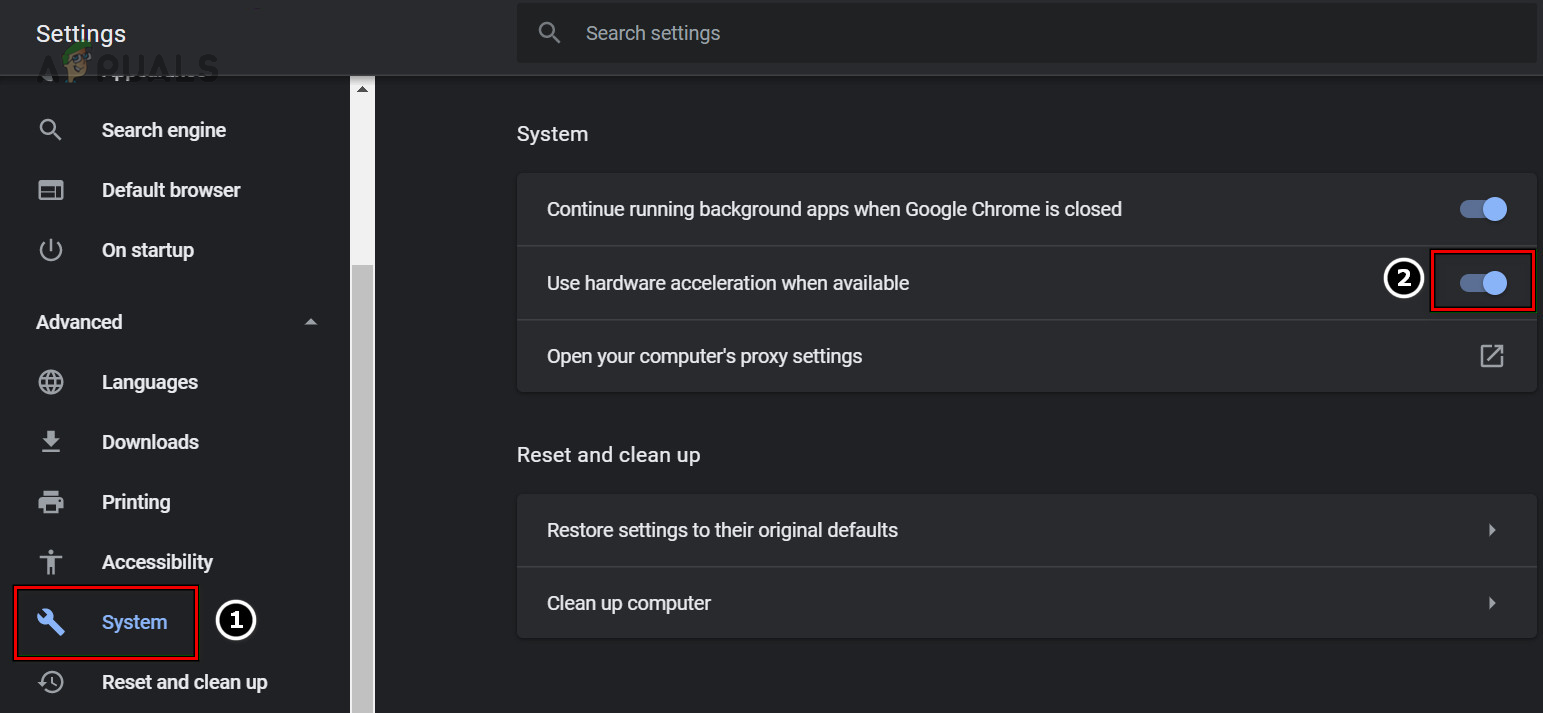
Disable Hardware Acceleration of Chrome - Now click on Relaunch Chrome to apply the changes and then check if the MacBook’s heating problem is cleared.
9. Launch the Browser in the Safe or Troubleshoot Mode
If a browser (like Firefox) is heating your MacBook (you can confirm through the Activity Monitor), then any of its extensions or cookies can be the reason for the MacBook’s overheating problem. Here, launching the browser in the safe or troubleshoot mode may solve the problem. For illustration, we will discuss the process of launching the Firefox browser in the Troubleshoot Mode.
- Launch the Firefox browser and click on the Menu button (the hamburger icon in the top right).
- Now open Help and select Troubleshoot Mode.
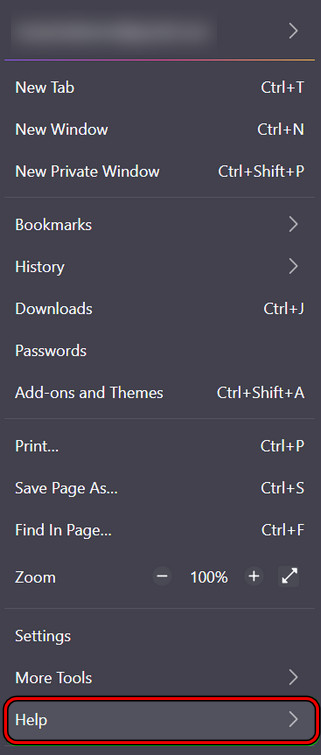
Open Help Menu in the Firefox Menu - Then click on Restart and afterward, in the Troubleshoot Mode dialogue, click on Open.
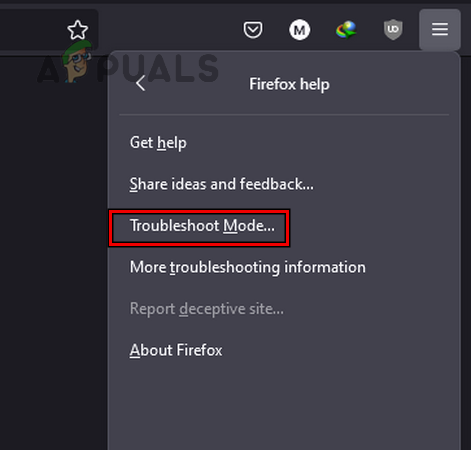
Open Firefox in Troubleshoot Mode - Once the browser is launched in the troubleshooting mode, check if it is working fine and not overheating the MacBook.
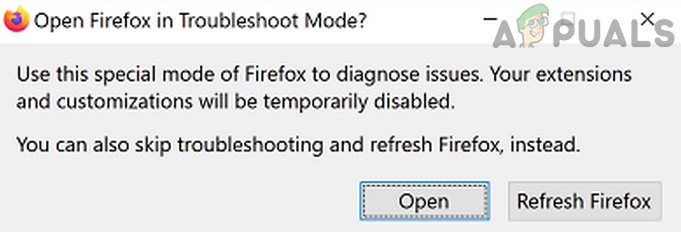
Open Firefox in the Troubleshoot Mode
10. Clean the MacBook’s Internals
If the dust or debris has accumulated around the MacBook’s fans or vents, then that may not let the heat flow out of the MacBook and thus cause its overheating. Here, cleaning the internals of the MacBook may solve the problem.
- Firstly, power off the MacBook and unplug its power cable.
- Then unscrew the bottom cover of the MacBook and detach the bottom cover carefully.
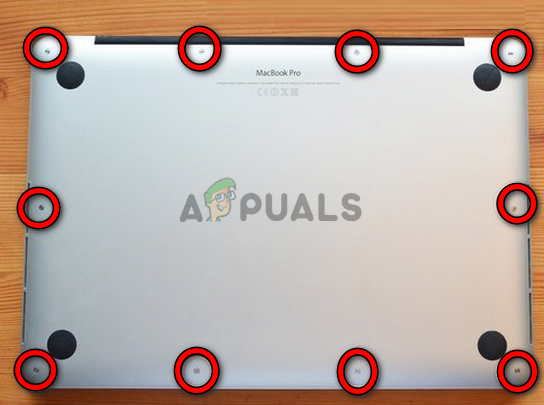
Unscrew the Screw of the Bottom Cover of the MacBook - Now use an air blower (but not on hot mode and high level) or Compressed Air Can to blow away any debris or dust from the MacBook’s chassis, fans, vents, etc.
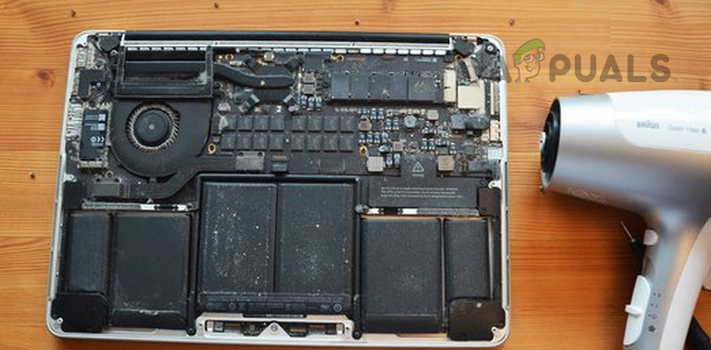
Clean MacBook by Using the Air Blower - Then use a brush (but gently) to remove any of the debris or dust from the MacBook.
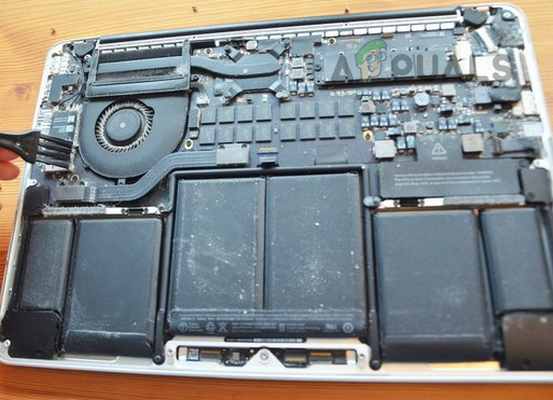
Use Brush to Clean MacBook - Now softly up lift the fan’s black rubber and clean out all corners around the fan.
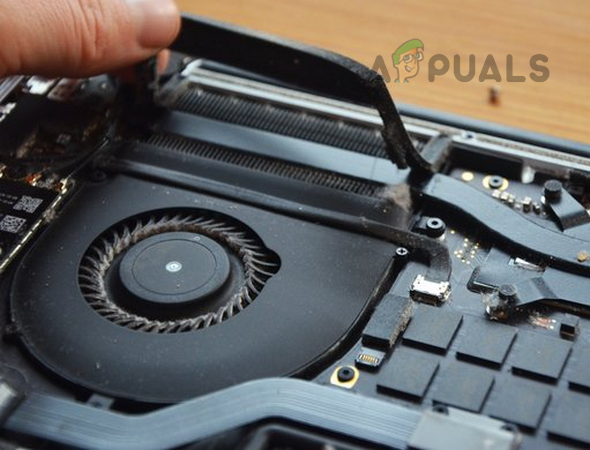
Uplift the Rubber of the MacBook’s Fan - Again, blow away any dust or debris from the MacBook by using the air blower or Compressed Air Can.
- Now place a finger on the center of the fan and use the brush’s blisters to clean dust/debris from the fan.
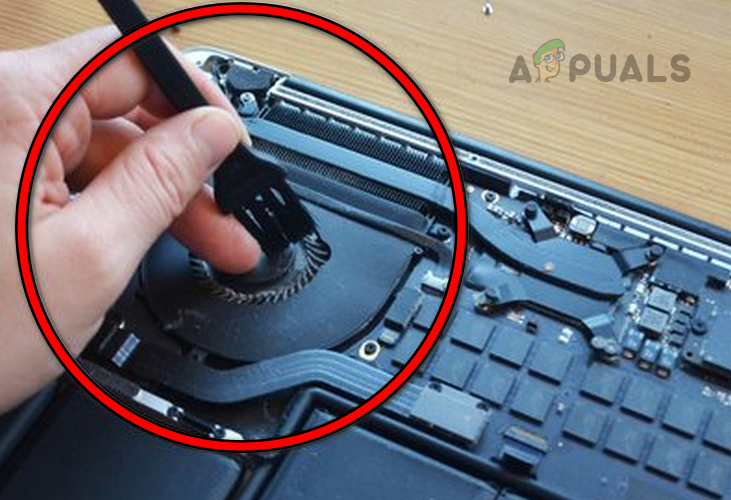
Clean Fans of the MacBook - Once again, use the blower or compress air can to blow out any dust or debris.
- Then put back the bottom cover of the MacBook and tighten its screws.
- Now power on the MacBook and check if its overheating issue is cleared.
- If that fails, check if using a 3rd party app (like Macs Fan Control) to set the fans to run at full speed and start when the MacBook’s temperature reaches 35 degrees Celsius solves the problem.
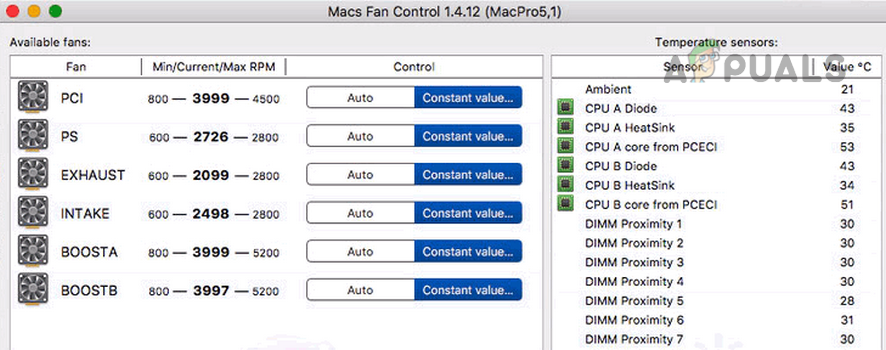
Use Macs Fan Control to Adjust Fan Speeds and Temperature - If that did not work, remove the bottom cover of the MacBook and then power on the MacBook.
- Afterward, check if the MacBook is not heating up. If so, then something is blocking the ventilation and you may improve the air ventilation around the MacBook to keep it under normal temperatures.
11. Disable Graphics Switching of the MacBook
If a dual-card MacBook is continuously switching between the graphics processors, then that overload on the MacBook may overheat the device. In this context, disabling the graphics switching of the MacBook may resolve the issue. Keep in mind, that disabling graphics switching of the MacBook may break some of its operations.
- Launch the MacBook’s System Preferences and select Battery.
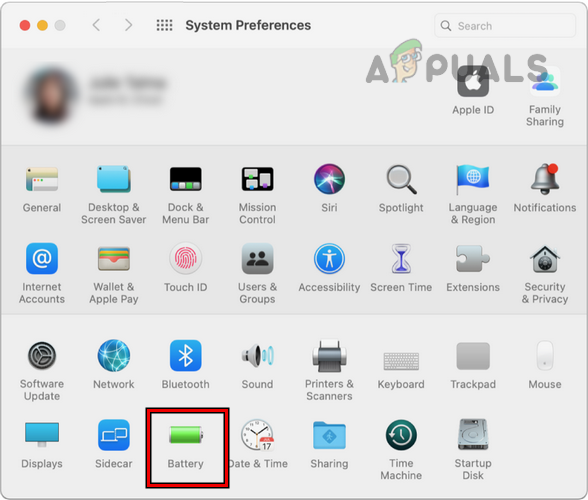
Open Battery in Mac’s System Preferences - Now, in the left pane, head to the Battery tab, and then, in the right pane, uncheck Automatic Graphics Switching. For macOS Cataline (10.15) or below, the option will be in Energy Saver Preferences.
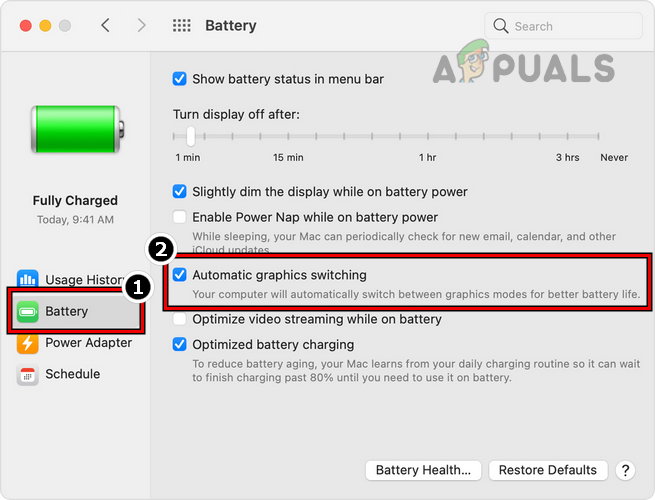
Disable Automatic Graphics Switching of the MacBook - Then restart the MacBook and upon restart, check if its overheating issue is cleared.
- If that fails and you are using an external monitor or drive with the MacBook, check if removing the external monitor or drive from the MacBook solves the problem (particularly after a restart).
12. Disable the Airplay Receiver of the MacBook
If Airplay Receiver is in a constant loop of trying to connect to another Airplay device (that is not present), then the continuous engagement by Airplay Receiver modules may overheat the MacBook. In this scenario, disabling the Airplay Receiver feature of the MacBook may solve the problem; you can reactivate the feature when required.
- Open the System Preferences of the MacBook and select Sharing.
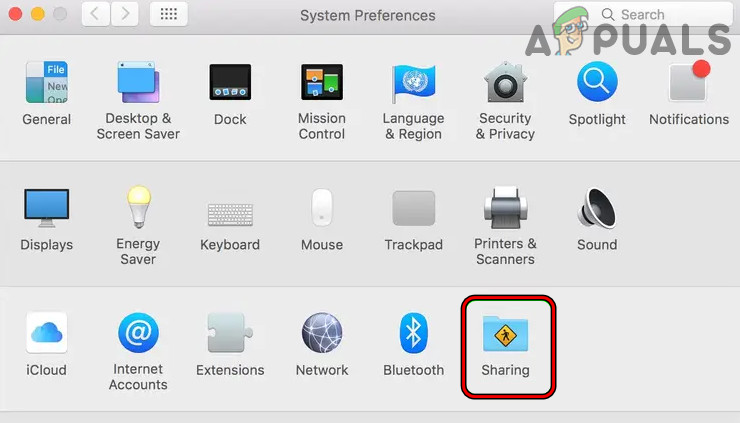
Open Sharing in the System Preferences of Mac - Now, in the Services list, uncheck the Checkbox of Airplay Receiver and apply the changes.
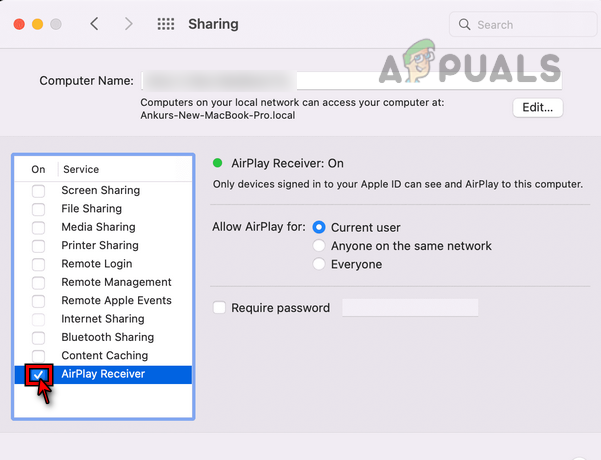
Disable Airplay Receiver on the Sharing Preferences of the MacBook - Then restart the MacBook and upon restart, check if it is working normally without heating up.
- If that did not work, check if moving your user folders from /hard_drive/folder to /hard_drive/users/yourloginname/documents/folder (the new file structure after Big Sur) solves the problem.
13. Disable Turbo Boost of the MacBook
Many of the Intel-based Macs have a Turbo Boost feature. A supported MacBook automatically enables Turbo Boost to perform resource-demanding processes (like video editing or gaming) and disables the feature for less demanding operations.
Sometimes, this automatic turbo boost may get stuck in the operation and keep hogging the system resources, thus causing the overheating issue. Here, disabling the MacBook’s Turbo Boost may solve the problem. But there are two caveats, you can not disable this option natively and may use a 3rd party app. Secondly, disabling the Turbo Boost feature of a MacBook may impact its performance.
- Download and install Turbo Boost Switcher or a similar app on the MacBook.
- Now launch it and on the Menu bar, click on the Turbo Boost icon. If the execution of the Turbo Boost Switcher is blocked, you may enable Turbo Boost Switcher in the MacBook’s Security Preferences.
- Then select Disable Turbo Boost and if asked to, enter the admin username/password of the MacBook.
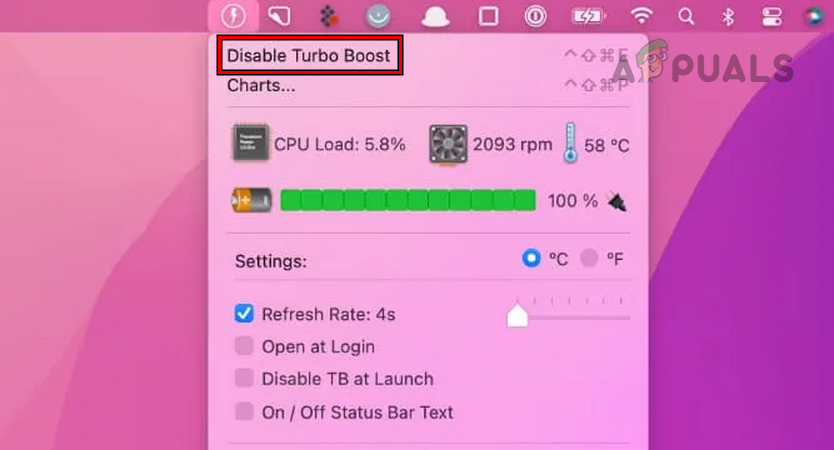
Disable Turbo Boost of the MacBook - Now check if the MacBook is working fine without overheating.
14. Edit the Problematic Application Settings
MacBook may overheat if an application (like Adobe Lightroom) is not configured optimally to work with the MacBook. Here, editing the relevant settings of the problematic application may solve the problem. For elucidation, we will discuss the process for Adobe Lightroom.
- Launch Adobe Lightroom and open its Catalogue Settings.
- Now head to the Metadata tab and disable Face Detection.
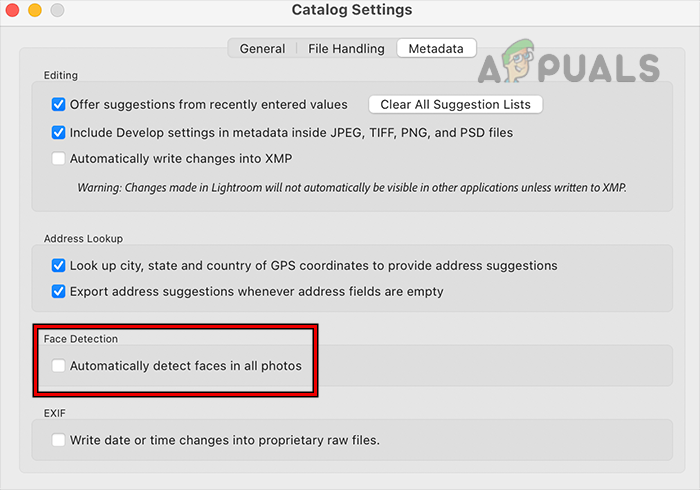
Disable Face Detection in the Adobe Lightroom on the MacBook - Then disable Address Lookup and afterward, open Lightroom Preferences.
- Now select Performance and enable both options under Use Graphics Processor.

Enable Use GPU for Display and Use GPU for Image Processing in the Adobe Lightroom Preferences - Afterward, set Camera Raw Cache to 32 GB and Video Cache to 5 GB.
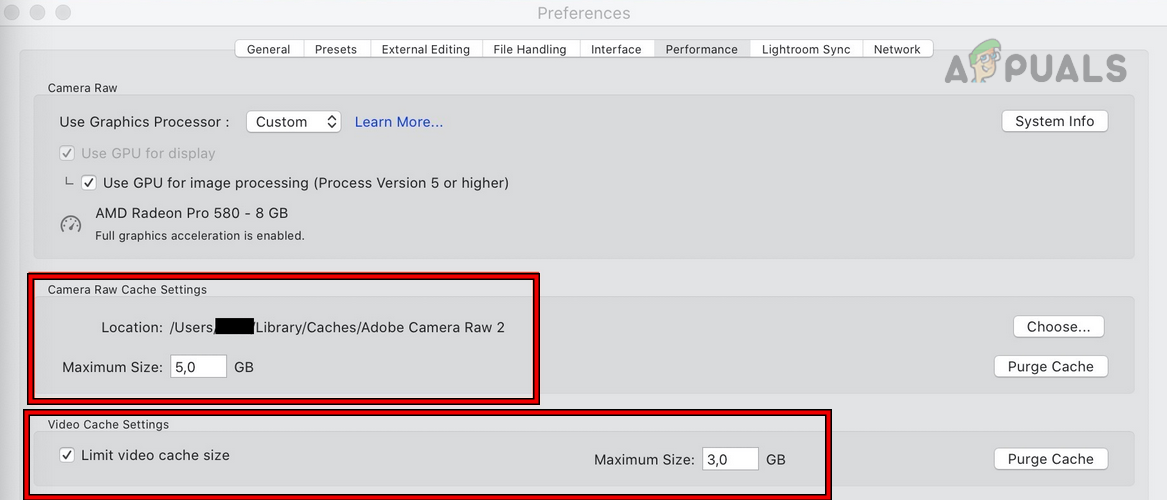
Change Camera Raw Cache and Video Cache of the Adobe Lightroom - Now head to Import Options under Lightroom Preferences and disable the option to Replace Embedded Views with Standard Previews by unchecking its checkbox.
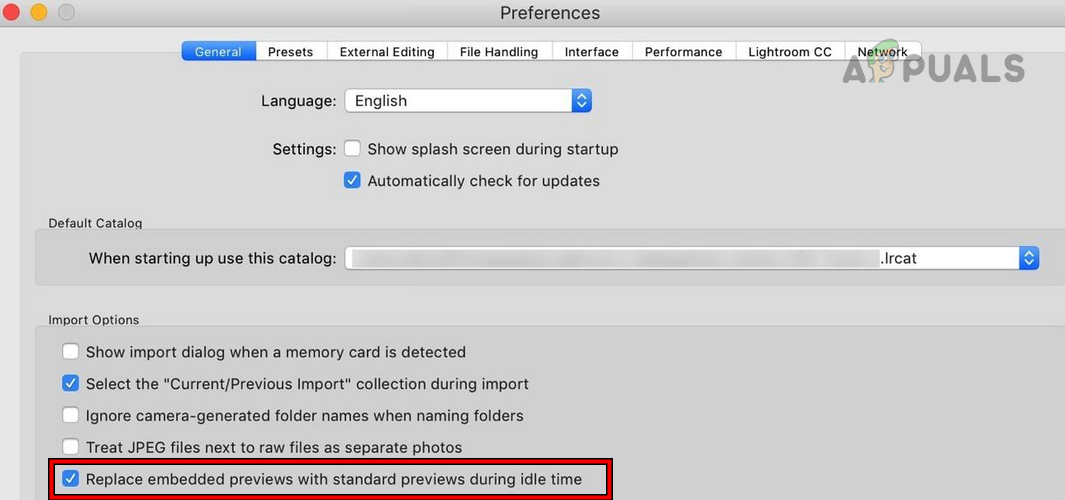
Disable Replace Embedded Views with Standard Previews in the Adobe Lightroom - Then wait for 5 minutes while keeping Lightroom opened and afterward, check if the MacBook temperature is back to normal.
15. Uninstall the Conflicting Application
If the installation of a particular application is corrupt or in conflict with the macOS, then that may overheat the MacBook as the application fails to behave normally and may become resource-hogging. In this scenario, uninstalling the problematic application may solve the problem. Here is a list of apps reported to overheat a MacBook:
- Chrome
- Grammarly
- Bitdefender
- Malwarebytes
- Spotlight
- Xcode
- Oversight
- Cloudflare Client
- EFI – Fiery Hot Folders & Virtual Printers
If you have any of these applications or similar ones on your MacBook, then probably uninstalling (if not native, otherwise, quit the native apps in the Activity Monitor) may solve the problem.
As it is practically not possible and feasible to cover all such applications, for illustration, we will go through the process for the Chrome browser. Before proceeding, make sure to back up essential data/info of the Chrome browser
15.1 Install Chrome Over the Current Installation
- Launch another browser (not Chrome) and download the latest Chrome installer for Mac.
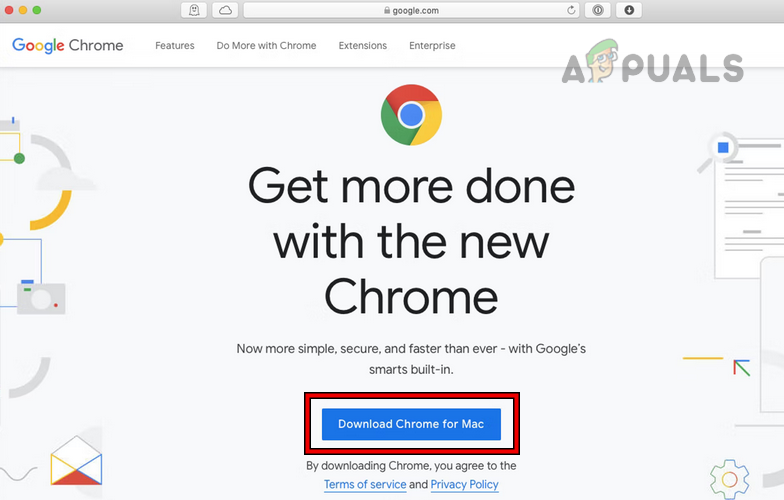
Download Chrome for Mac - Now launch the downloaded file (googlechrome.dmg) and in the resulting window, drag/drop the Chrome to the Applications folder. If asked to, enter the admin password.
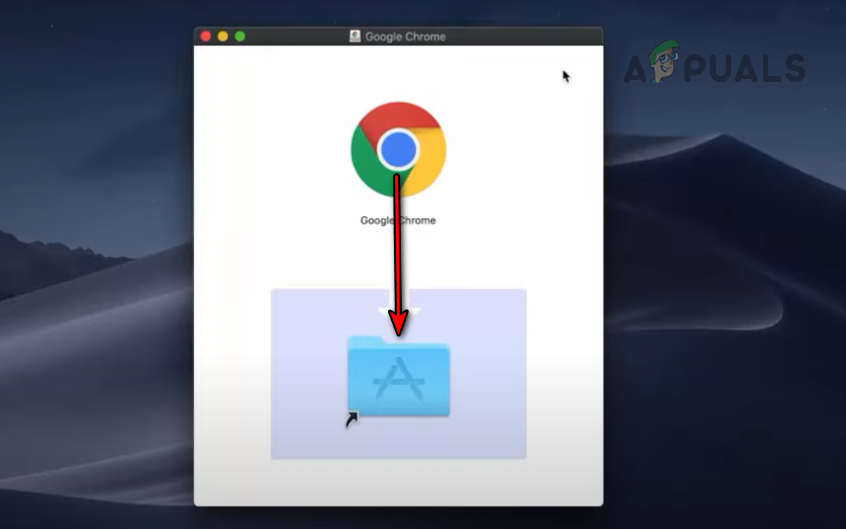
Drag and Drop Google Chrome on the Applications Folder - Now open Chrome and then launch Finder.
- Then, in the sidebar, click Eject on the right of Google Chrome and then follow the prompts on the screen to complete Chrome’s installation process.
- Afterward, check if the MacBook’s overheating issue is resolved.
15.2 Reinstall Chrome
- If Chrome is running on the MacBook, right-click on it (on the Dock) and select Quit.
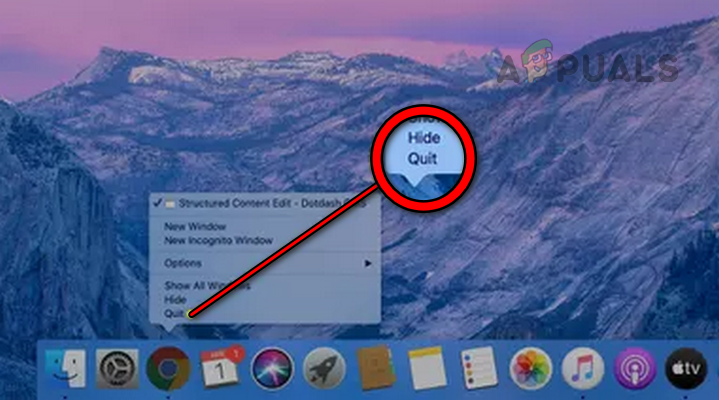
Quit Chrome on the MacBook - Now, launch Finder and open the Applications folder.
- Then drag and drop Google Chrome to the Trash. Alternatively, right-click on Google Chrome and select Move to Trash.
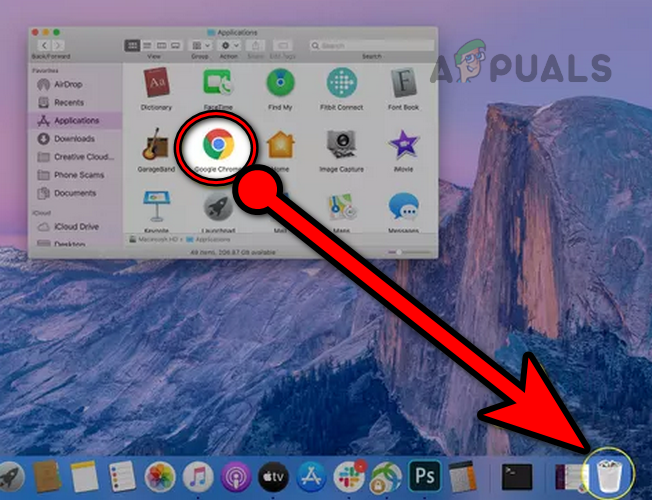
Drag and Drop the Google Chrome to the Trash - Now right-click on Trash and select Empty Trash.
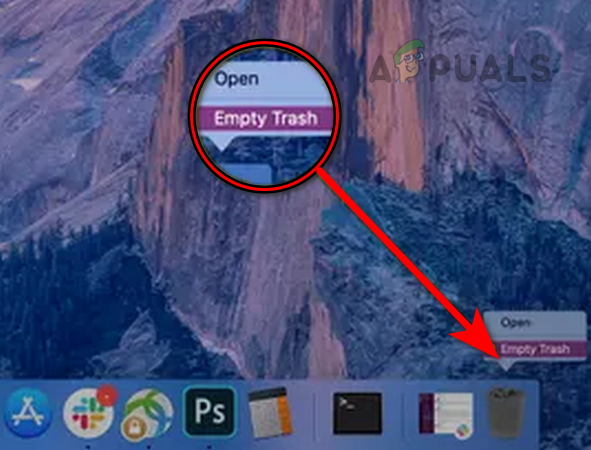
Empty Trash of the MacBook - Then open Finder and select Go>> Go to Folder.
- Now enter the following path and click Go:
~/Library/Application Support/Google/Chrome
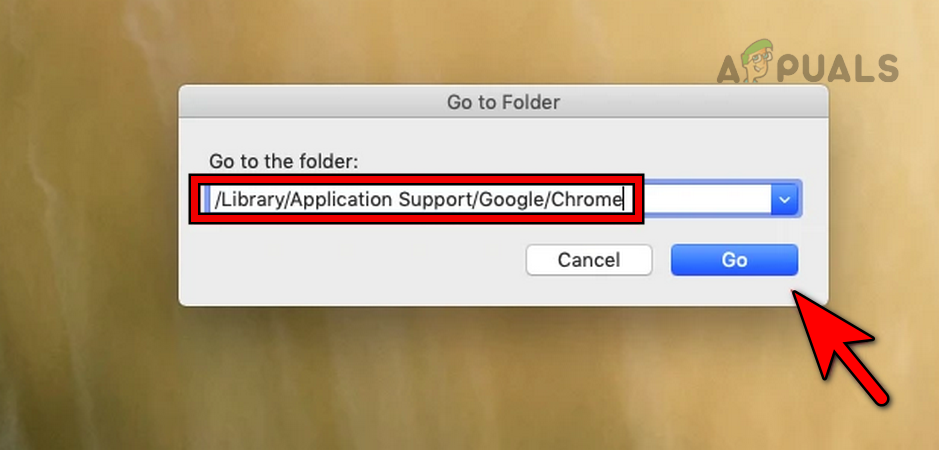
Go to the installation directory of the Chrome on the MacBook - Then select all the contents of the folder by pressing Command + A and afterward, right-click on them.
- Now select Move to Trash and then empty the trash.
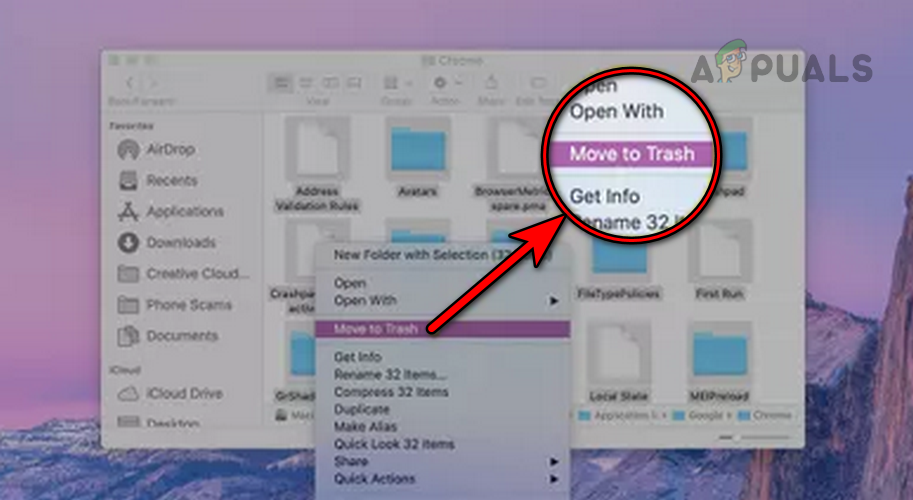
Move Google Installation Folder to Trash on the MacBook - Then restart the MacBook and upon restart, check if the MacBook’s overheating problem is solved.
- If so, then you may reinstall Chrome. If the issue reappears after reinstalling Chrome, check if disabling Google Chrome Helper resolves the issue.
16. Perform a Factory Reset of the MacBook
If none of the above worked for you, then the corrupt OS of the MacBook might be causing the heating issue and here, performing a factory reset of the MacBook may solve the problem. Before proceeding, make sure to back up the essential data/info of the MacBook. Moreover, do not forget to fully charge the MacBook. Additionally, make sure to log out of iMessage, iCloud, and any other accounts on the MacBook before resetting it.
- Power off the MacBook and then hold the following keys:
Command + R
- Now, while keeping hold of the above-mentioned keys, power on the MacBook, and once the Apple logo is shown, release the keys.
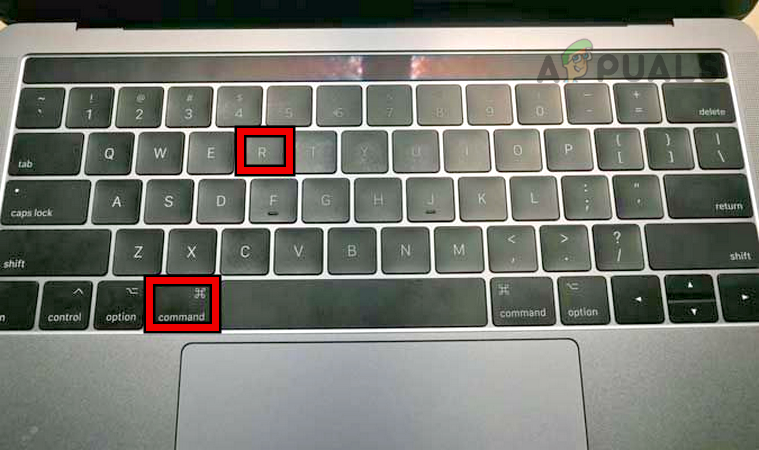
Press Command + R Keys on the MacBook - Then select the language as per your requirements.
- Now select Disk Utility and click on Continue.
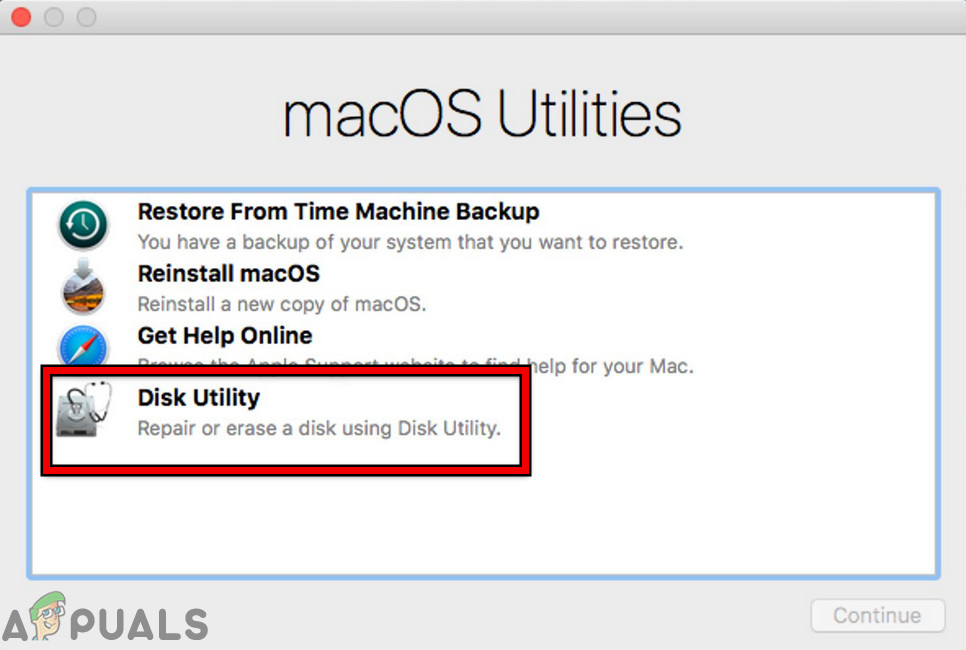
Open the MacBook’s Disk Utility - Then, in the left pane, select the Startup Disk (generally named Macintosh HD), and afterward, click on Erase (near the top).

Erase the Macintosh HD in the MacBook’s Disk Utility - Now, enter a name for the disk after erasing it and select Mac OS Extended (Journaled). If you want to encrypt the disk, you may select Journaled, Encrypted.
- Then click on Erase and once done, click on Done.
- Afterward, connect the MacBook to the Internet by enabling its Wi-Fi connection(in the top right corner).
- Now, on the main menu, select Reinstall macOS and click on Continue.
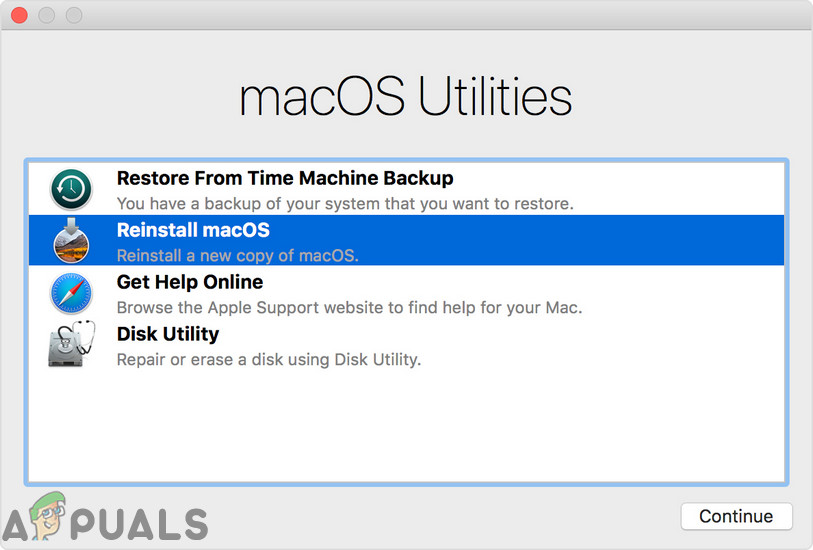
Reinstall macOS - Then follow the prompts on the screen to complete the process and once done, hopefully, it will be clear of the heating issue.
If the issuer persists, then check if downgrading the OS of the MacBook resolves the issue. If that did not work or is not feasible, you may contact Apple support to solve the problem or if possible, try to get the MacBook replaced (if under warranty). If that is not an option, check if using a laptop cooling stand or a cooling pad solves the problem.





